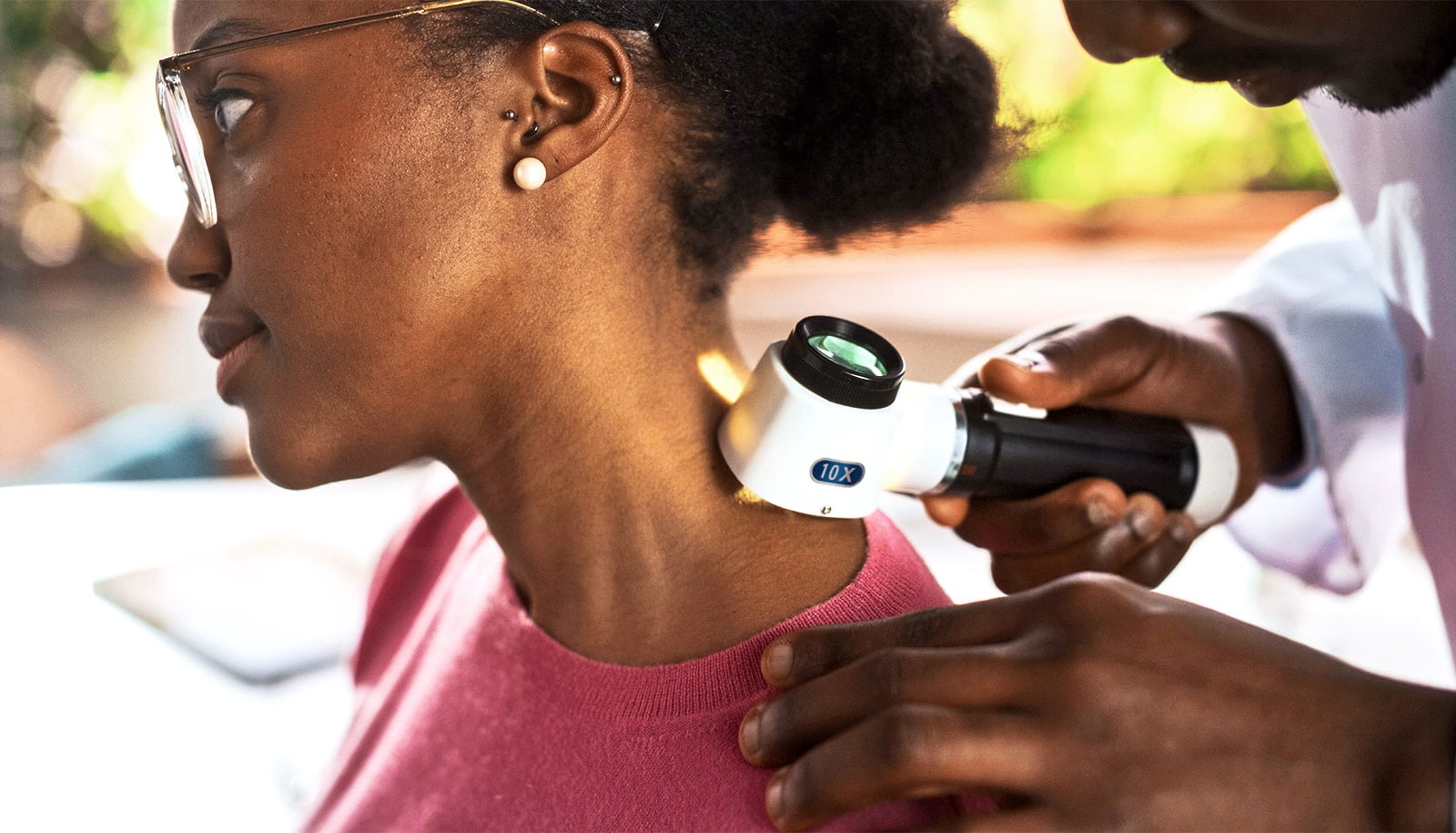
To detect one melanoma case in racial and ethnic minority populations, more than 12,000 screenings need to be done. "This is an almost unfathomable number of doctor's visits to find one melanoma," says Laura Ferris. (Credit: Getty Images )
More melanoma screening won’t close the racial gap in survival
Increased skin cancer screenings for people of color isn't enough to address racial disparities in the survival rates of people with melanoma.
Increased skin cancer screening in people with skin of color is not sufficient to address racial disparities in melanoma survival rates, according to a new study.
Melanoma causes the most deaths of any skin cancer but is usually treatable if caught early. Although the disease is most common in white people, survival odds are worse in people with darker skin tones.
“In this study, we asked whether screening could address this disparity by helping detect melanoma early,” says senior author Laura Ferris, a dermatologist at the University of Pittsburgh Medical Center and professor of dermatology at the Pitt School of Medicine.
“Our findings suggest that regular skin checks are not the answer, but that doesn’t mean that we should be offering less care or that our work is done. We need to investigate other approaches to improve outcomes for melanoma in patients with skin of color.”
For the study, published in JAMA Dermatology , Ferris and her team analyzed data from 60,680 patients who self-reported as Hispanic, Alaska Native, American Indian, Asian, Black, or Pacific Islander. Of those, 12,738 were screened for skin cancer, and 47,942 were not screened.
During the five-year study period, only eight melanomas were detected in this population, and just one of these was identified during a screening visit. Four were identified by health care professionals during other types of visits and three were detected by the patient or a family member.
The results suggest that to detect one melanoma case in racial and ethnic minority populations, more than 12,000 screenings need to be done. For comparison, the number needed to screen in white patients is 373, the researchers found in an earlier study.
“This is an almost unfathomable number of doctor’s visits to find one melanoma,” says Ferris. “Rather than screening everyone, educating physicians about presentation of melanoma in skin of color, educating the public about their risk of melanoma, and making sure that people have access to a dermatologist when they have a suspicious lesion could be more effective in improving early detection.”
While people often think of melanomas as being sun-induced, not all forms of the disease are caused by sun exposure. Certain types of melanomas can arise on the palms of the hand, soles of the feet, and places that are always covered by clothes, and these tend to be more common in people with darker skin.
“UV exposure is the biggest modifiable risk factor for melanoma, so sun protection is incredibly important, but it’s not the only factor,” says Ferris. “If you have a suspicious lesion somewhere that is always covered by a shirt, it could still be melanoma. We encourage patients to seek care regardless of their perceived risk.”
Beyond early detection, better treatments for melanoma could also help address disparities in survival rates, Ferris says. Most of the current therapies for the disease were tested in non-diverse, mostly white populations, so it’s important that future clinical trials include diverse participants.
Additional coauthors are from Drexel University and the University of Pittsburgh.
The University of Pittsburgh Melanoma and Skin Cancer Program funded the work.
Source: University of Pittsburgh
The post More melanoma screening won’t close the racial gap in survival appeared first on Futurity .
Share this article:
This article uses material from the Futurity article, and is licenced under a CC BY-SA 4.0 International License. Images, videos and audio are available under their respective licenses.
Related Articles:
Age-related skin changes can lead to metastatic melanoma
March 14, 2024 • futurityTeen melanoma cases in US drop sharply
Nov. 14, 2019 • futurityLinks/images:
- https://www.futurity.org/melanoma-mortality-2834462/
- https://doi.org/10.1001/jamadermatol.2023.2067
- https://www.futurity.org/melanoma-cells-microscope-1422592-2/
- https://www.upmc.com/media/news/072723-racial-disparities-melanoma
- https://www.futurity.org/melanoma-screening-cancer-survival-racial-disparity-2953282/
- https://www.futurity.org


